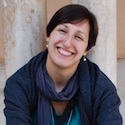The "nexus" explained: Follow-up questions
On 12 April, the first session of the new learning stream on the humanitarian-development-peace nexus took place, jointly organized by ICVA and PHAP. The event explored how humanitarian action can contribute to development and peace efforts and considered some of the risks and challenges involved in changing ways of working and pursuing collective outcomes. This introductory discussion focused on the main actors and current initiatives aiming to bring together humanitarian, development, and – when appropriate – peace work. The session included presentations by UN and NGO guest experts, who provided their own perspective on working in the “nexus”.
The event featured presentations from Nina Nepesova, Director, Humanitarian Policy and Advocacy, Humanitarian and Emergency Affairs (HEA) at World Vision International, Priya Gajraj, UN Resident Coordinator and UNDP Resident Representative for the Republic of Senegal and Velina Stoianova, Humanitarian Affairs Adviser at Médecins Sans Frontières (MSF). While many of the questions from participants were answered during the event (listen to these in the event recording), there were more questions than there was time for, and the guest experts have answered follow-up questions in writing, which you can now read on this page.
“In your model of emergency gap drivers - where do I find national state actors in the conflict stricken countries?”
- Denmark

Velina Stoianova
Given that the model is not structured around actors, but rather around the enablers and disablers of humanitarian assistance (whether they are policies, practices, mechanisms, etc.), any given actor could be placed in different parts of the framework. In that sense, it would depend on the action/policy/impact on humanitarian assistance that you are thinking of in relation to national state actors. If we are speaking of their obstruction of humanitarian access, or of the limitation of humanitarian space by the so called ‘assertive states’, then they could be placed within the External elements under “Political Agendas Dictate/Obstruct Humanitarian Action”; if we are thinking about their role in driving new aid paradigms, then we could place them within the Internal elements under “Conceptual”; etc.
“We have discussed about the risk of politicization of aid, but how non-political is humanitarian assistance in reality?”
- Humanitarian Affairs Manager, Germany

Velina Stoianova
When we speak of politisation of aid, we are not denying that humanitarian action is imbued with political motivations, drive and objectives. From a political science perspective, humanitarian action, as any other social activity, is based on certain philosophical, sociological, political, and even belief-system grounds. In the same way that legal frameworks, social-welfare policies, domestic and international law, etc. are imbued with political significance (amongst other things), so is the humanitarian action as we know it with: with a defined scope of action and based on the core humanitarian principles. When we speak of politisation of humanitarian aid, we are referring to instances in which humanitarian action is used for other purposes different from the objectives laid out for humanitarian action; or that political motivations are used to curtail, deny or shape humanitarian policy in contradiction to humanitarian objectives.
“In your opinion, are there any instances in which development and/or peace action are not compatible with humanitarian action and vice versa?”
- Humanitarian Affairs Manager, Germany

Velina Stoianova
It is not so much a matter of compatibility or lack thereof, as it is about how much we expect the different policies – humanitarian, development, peace and state-building –to align or even merge together. In acute conflict or in the context of armed violence, particularly when the state is party to the conflict, any state-driven or state-focused policy will come in tension with principled humanitarian action.
“As mentioned in the event, one of the key challenges of operationalizing the “nexus” seems to be the fact that funding streams for development vs humanitarian assistance remain very distinct and separate. On the donor side, are there indications that the donors are moving towards more flexibility in their funding streams in order to help operationalize the “nexus”? Any concrete examples or attempts of donors using a new approach or allowing more flexibility within their funding?”
- UN Officer, Lebanon & NGO Country Director, Palestine

Velina Stoianova
This question is probably better posed to humanitarian NGOs that receive government donor funding or to humanitarian donors themselves. However, I would suggest having a look at Sweden’s Regional Strategy for the Syria Crisis 2016-2020 for some interesting approaches.
“If possible, I would like to know more on how the localization agenda is integrated in this process and what is the relevance of it in the context of making the "nexus" work and become sustainable. How are local NGOs and governments being considered and engaged in discussions and reforms related to the “nexus”?”
- Learning and Development Officer, Switzerland & Humanitarian Advocacy Advisor, Kenya

Velina Stoianova
The New Way of Working (NWOW) presents a ‘new paradigm’ for increased synergy across the humanitarian, development and peacebuilding sectors to meet people’s immediate needs, while reducing their risk and vulnerability in the longer term. As a multi-stakeholder agenda, it requires the active engagement of national actors – governments, local authorities, non-governmental and civil society organisation – as well as international bilateral and multilateral partners, humanitarian actors, development practitioners and peacebuilders in all humanitarian contexts. In this sense, the NWOW supports and further boosts the localisiation of aid agenda. From the Emergency Gap perspective, this could be problematic in conflict setting when the Government is party to the conflict of its actions are driving the humanitarian crisis in some way (counter-terrorism operations, displacement of population for security or other national interest reasons, etc.). However, given that MSF is not involved in the NWOW discussions, we could not comment on how much local actors are engaged in them.
You can access the rest of the Q&A as well as further resources on the event page.